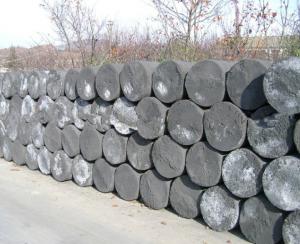When we talk about the heart of any electrolytic process, the first thing that comes to mind is the electrode. It’s like the unsung hero of the whole operation, silently doing its job, and yet, without it, nothing would happen. And when it comes to electrodes, carbon and graphite are the go-to materials for many reasons. They’re like the reliable friends you can always count on.
Carbon and graphite electrodes are not just any ordinary components; they’re the backbone of numerous industries, from aluminum production to chlorine generation, and even in the refining of copper and other metals. They’re versatile, robust, and have a knack for conducting electricity efficiently. But let’s dive deeper into what makes these electrodes so special and why they’re the preferred choice for many electrolytic processes.
First off, the conductivity of carbon and graphite is something to marvel at. They’re natural conductors, which means they can transfer electrical energy with minimal resistance. This is crucial in electrolysis, where the flow of electric current is the driving force behind the chemical reactions. The better the conductivity, the more efficient the process, and carbon and graphite electrodes deliver just that.
Another aspect that makes carbon and graphite electrodes stand out is their chemical stability. They don’t react easily with other elements, which is a blessing in an environment where various chemicals are at play. This stability ensures that the electrodes can withstand the rigors of electrolysis without breaking down or causing unwanted side reactions.
But it’s not just about being stable; these electrodes are also known for their strength and durability. They can handle high temperatures and pressures, which are common in electrolytic cells. This resilience means that they can provide consistent performance over long periods, reducing the need for frequent replacements and minimizing downtime.
Now, let’s talk about the environmental aspect. Carbon and graphite electrodes are relatively environmentally friendly. They don’t produce harmful by-products during the electrolysis process, making them a greener choice for industries looking to reduce their ecological footprint.
Moreover, the cost-effectiveness of carbon and graphite electrodes is hard to ignore. They’re not only affordable but also have a longer service life compared to other electrode materials. This means that, in the long run, industries can save a significant amount of money by choosing these electrodes.
But, like any other material, carbon and graphite electrodes have their limitations. For instance, they can be susceptible to mechanical wear and corrosion over time, which can affect their performance. However, with proper maintenance and care, these issues can be mitigated, ensuring that the electrodes continue to serve their purpose effectively.
In the world of electrolysis, carbon and graphite electrodes are not just tools; they’re partners in progress. They’re the silent force that drives the industry forward, enabling the production of essential chemicals and materials that we rely on every day.
So, the next time you see an electrode, take a moment to appreciate its role in the grand scheme of things. It might not be the most glamorous part of the process, but it’s undoubtedly one of the most important. And remember, when it comes to carbon and graphite electrodes, you’re choosing more than just a component; you’re choosing reliability, efficiency, and a commitment to a greener future.

